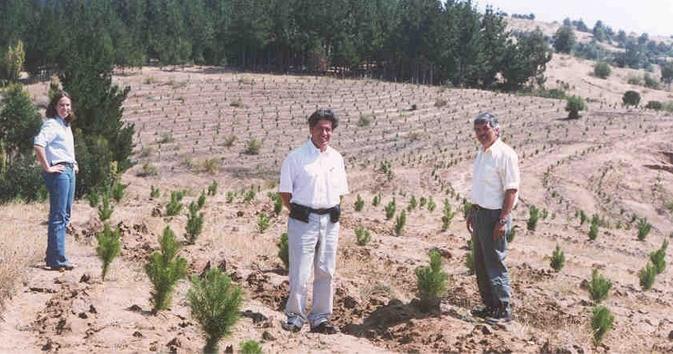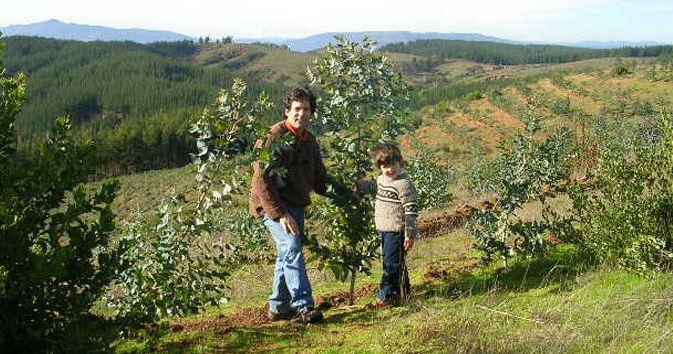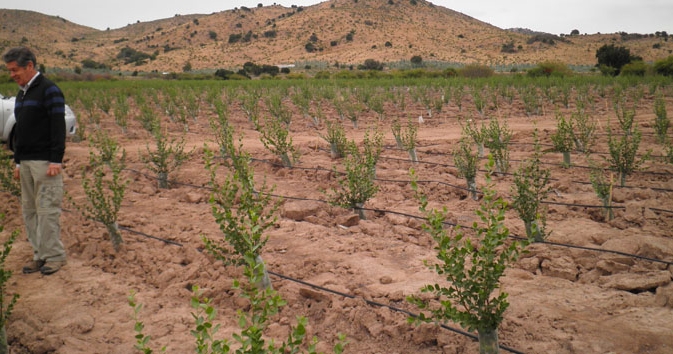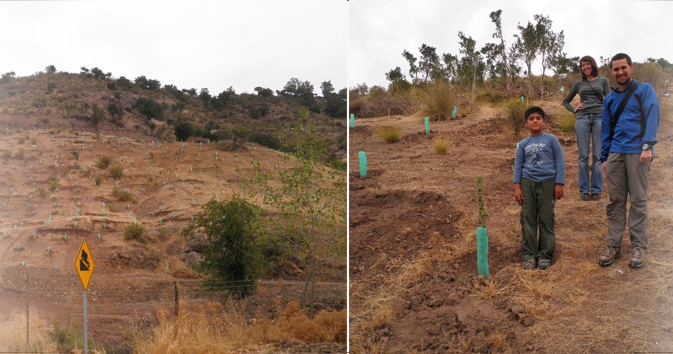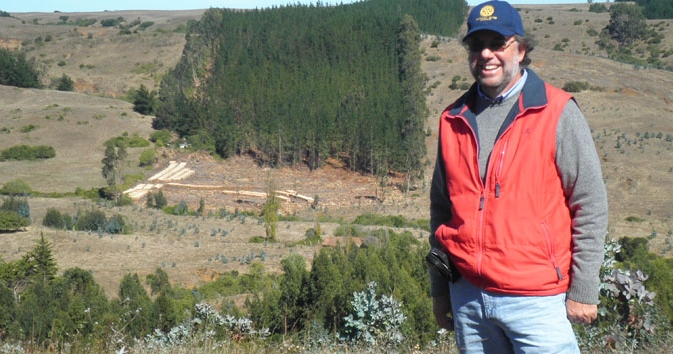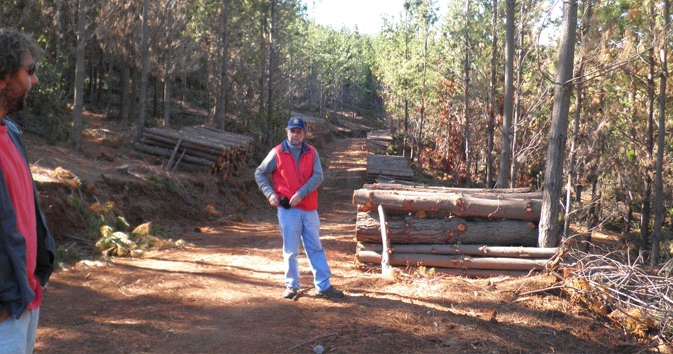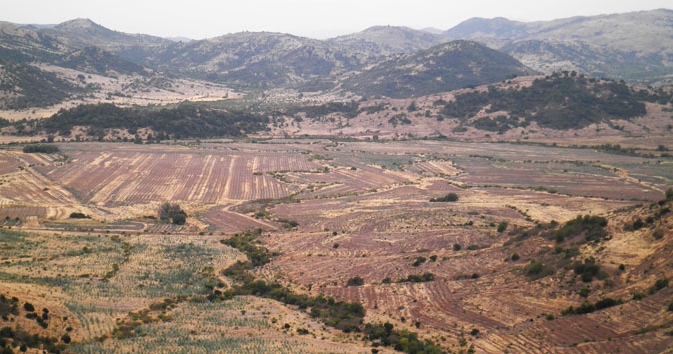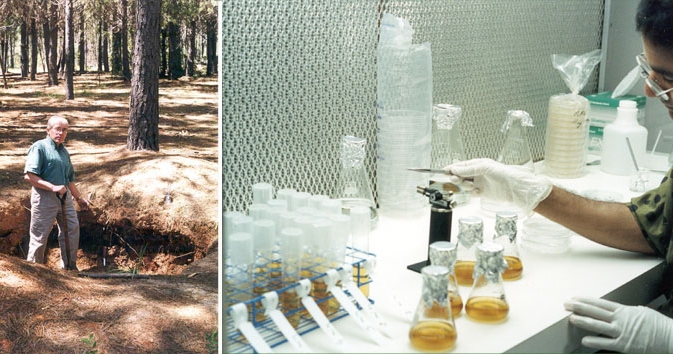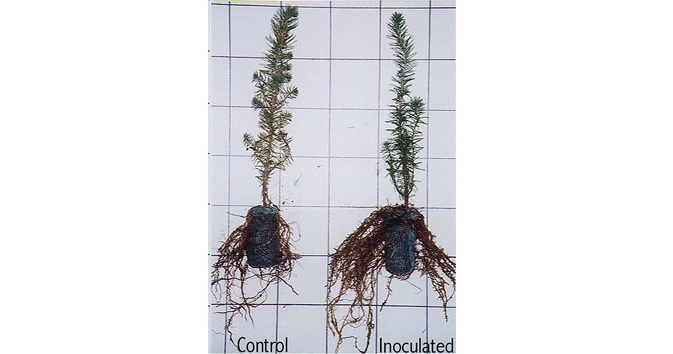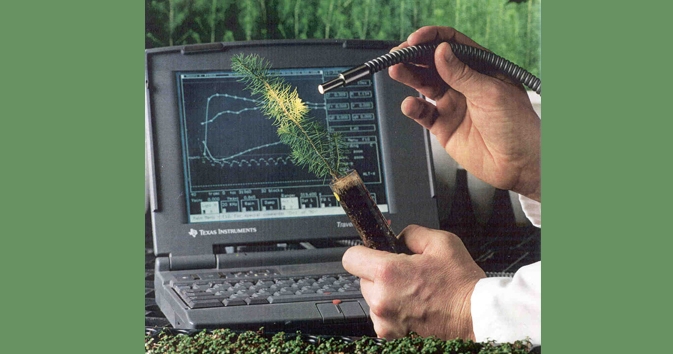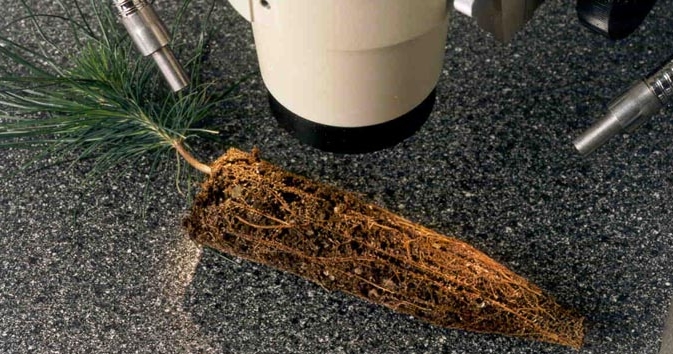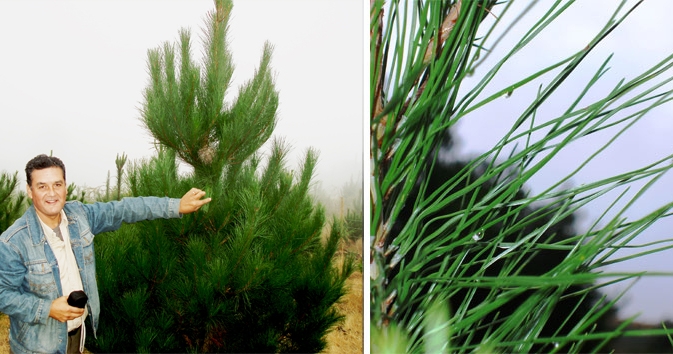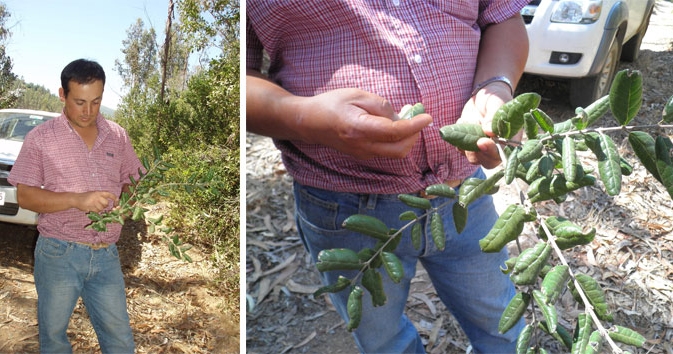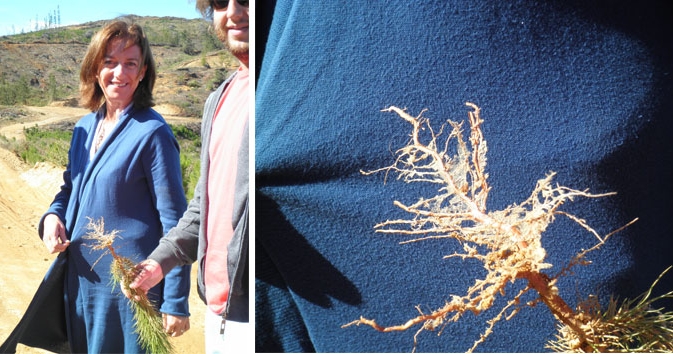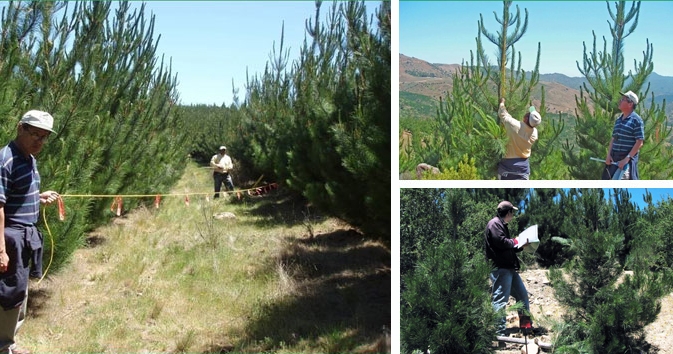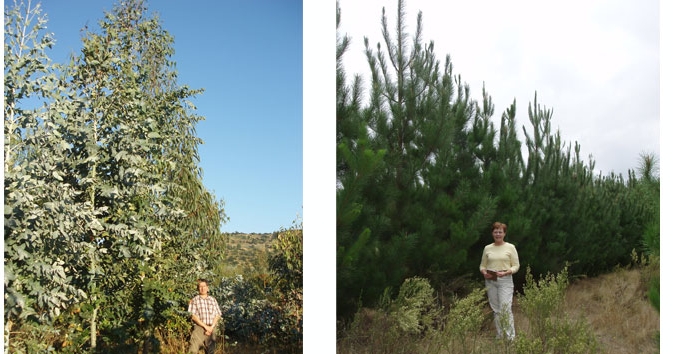Glossary
Additionality
Project-based activities that generate emission reductions additional to those that would occur under the "business-as-usual" scenario. "Financial Additionality" means that projects should not be financed by official development aid. Mikro-Tek's projects have been approved to address both financial additionality and technology additionality.
Afforestation
Afforestation is the conversion of land that has not been forested for a period of at least 50 years, to forested land, through planting, seeding and/or the human-induced promotion of natural seed sources. Mikro-Tek has afforested approximately 7,500 hectares in Chile with faster growing tree species (pine and eucalyptus) that mature in 10 to 25 years, as well as Quillaja saponaria which mature in 80-100 years. Agroforestry is a term used to describe land-use systems and practices where woody perennials are deliberately integrated with crops and/or animals on the same land in order to provide ecological and/or economic interaction benefits. Mikro-Tek's projects have included work with shade grown coffee plantations, bee-keeping with Quillay species in Chile, micro-propagation with bananas, strawberries, stone fruits, as well as inter-planting of nitrogen-fixing species to provide natural fertilizer to targeted plants.
Baseline
The emissions that would take place under a business-as-usual (BAU) scenario, often referred to as the 'baseline scenario' i.e. expected emissions if the emission reduction activities were not implemented. In Mikro-Tek's afforestation projects in Chile, the baseline is considered to be grassland.
Baseline Study
A baseline study is undertaken at the project site before a carbon project is implemented in order to forecast emissions that would take place under a business-as-usual scenario (i.e. if the project activities were not implemented). This forecast is used in project monitoring, validation and verification, when the total carbon sequestered is measured and the baseline amount is deducted to derive actual carbon sequestered as a result of the project.
Biodiversity
Biodiversity is a measure of the health of ecosystems and the degree of variation of living organisms and elements they interact with (e.g. air, soil, water, sunlight). Mikro-Tek's technology enhances biodiversity by reducing the need for chemical additives such as fertilizers and herbicides, naturally improving water and nutrient uptake from the soil, reducing plant susceptibility to disease, insects, and physiological damage from stress events (transplant shock, temperature and moisture fluctuations etc.), enhancing forest adaptation to climate change, and extreme weather events, and improving the biological health of the soil through increased soil organic content, soil porosity and water holding capacity, and decreased soil erosion.
Biotechnology
Biotechnology is the application of scientific and engineering principles to process living organisms into goods and services. Living organisms are biological agents such as bacteria, fungi, plant and animal cells, and parts of all the preceding e.g. enzymes. Biotechnology products include: cheese, yogurt, alcoholic beverages, antibiotics, vaccines, ethanol, acetone, animal feeds, nitrogen-fixing inoculants, tissue culture, water purification, and effluent treatment. Mikro-Tek uses mycorrhizae, naturally occurring soil-inhabiting fungi that form a symbiotic relationship with the roots of most terrestrial plants, resulting in increased water and nutrient uptake. This leads to increased survival and growth of plants, and a corresponding increase in the carbon removed from the atmosphere through the processes of photosynthesis and carbon sequestration.
Canada's Climate Change Action Plan
Carbon Credit
This is a generic term for any tradable certificate or permit representing the right to emit one tonne of greenhouse gas, measured in carbon dioxide equivalents (CO2e). Mikro-Tek currently holds approximately 4.5 million carbon credits generated from projects in Chile, and 500,000 carbon credits generated in Canadian boreal forests.
Carbon Market
The carbon market is one of the most rapidly growing financial markets in the world today, and broadly speaking, is divided into "compliance" markets and "voluntary" markets. Mikro-Tek has an inventory of carbon offsets registered under both.
Carbon Offsets
Offsets are the mechanism by which the impact of emitting a tonne of CO2 can be negated or diminished by avoiding the release of a tonne elsewhere, or by absorbing a tonne of CO2 from the air (domestically or internationally) that otherwise would have remained in the atmosphere.
Carbon Sequestration or Carbon Sinks
Reduction of net emissions of carbon dioxide (CO2) can be accomplished in two ways: either by reducing the rate at which CO2 is added to the atmosphere (e.g. those produced from burning fossil fuels or from clearing and burning forests), or by increasing sequestration the rate at which CO2 is removed from the atmosphere (e.g. by storing additional carbon in forests, soils and other carbon sinks). The latter can be accomplished through land management activities including re-vegetation, reforestation and afforestation as well as forest, cropland and grazing land management. Through photosynthesis plants remove carbon dioxide from the air, give off oxygen, and store the carbon as biomass. About one half of the dry weight of plant biomass is carbon, and one tonne of carbon in biomass represents 3.67 tonnes of atmospheric carbon dioxide.
Certification
The written assurance that, during the specified period, a project activity achieved the emission reductions as verified.
Certified Emission Reduction (CER)
Tradable units (carbon credits) of the Kyoto Protocols Clean Development Mechanism (CDM).
Clean Development Mechanism (CDM)
A market mechanism defined in Article 12 of the Kyoto Protocol as a project between a developed country and a developing country that provides the developing country with the financing and technology for sustainable development and assists the developed country in achieving compliance under the regulatory system in which they normally operate. The project can occur in any country that is a member of the CDM Annex 2.
Compliance Markets
are created by governments whose industrial firms are subject to carbon constraints. These markets are regulated by mandatory regional, national, and international carbon reduction regimes. The Kyoto compliance market is one example, now active only in the European Union, trading under the EU's Emissions Trading Scheme. In a Cap-and-Trade emissions reductions market, actors buy and sell carbon offsets to comply with the cap or limit imposed on their emissions.
Corporate Social Responsibility
A CSR policy functions as a built-in, self-regulating mechanism whereby a business monitors and ensures its compliance with the spirit of the law, ethical standards, and international norms. The goal of CSR is to embrace responsibility for the company's actions and, through its activities, encourage a positive impact on the environment, consumers, employees, communities, stakeholders and all members of the public.
Large Final Emitters (LFEs)
Normally defined as industrial entities that emit more than 25,000 tCO2e annually. (Some jurisdictions use the threshold of 100,000 tCO2eannually, but most countries are moving to the lower rate to follow international standards). These companies produce goods in emissions-intensive sectors such as primary energy or electricity production, mining and manufacturing, airlines and international shipping, transportation, etc. There are approximately 10,000 LFEs in the U.S. and approximately 700 across Canada. Mikro-Tek seeks long-term, ongoing supply contracts to provide cost effective emission offsets to large final emitters.
Leakage
Leakage is the indirect effect of activities that lead to a rise in emissions elsewhere (e.g. fossil fuel substitution can lead to a decline in fuel prices and a rise in fuel use elsewhere). For land use change and forestry activities, leakage could potentially result from such events as fire, disease, land clearing etc.
Monitoring
Monitoring is an exercise carried out by an independent third party to measure greenhouse gas emissions produced, or reduced, by a particular activity at a particular point in time. For example, it may refer to tracking carbon dioxide emissions from land use change, such as deforestation or agricultural practices, or it can refer to tracking the amount of reduction in carbon dioxide emissions from land use change projects like Mikro-Tek's that sequester additional carbon from the atmosphere.
Mycorrhizal Fungi
natural soil microbes that improve the health and growth rates of plants. In nature, healthy soils contain these beneficial organisms, but they are deficient in eroded, heavily used and degraded soils. Industrial disturbance to the soil in large-scale agricultural practices, forestry cutovers, or mining activity reduces or destroys these beneficial micro-organisms. The application of the microbes to seedlings prior to planting reduces the need for chemicals such as fertilizers and herbicides and provides increased stress resistance to the seedlings before they are exposed to environmental stresses such as transplant shock, or extremes of temperature and moisture. Mycorrhizal inoculum is produced in Mikro-Tek's facility in Timmins for shipment to project sites anywhere in the world.
Permanence
Refers to the length of time carbon will remain stored after being sequestered. For example, forest carbon sequestration is not permanent if the forestry activities are discontinued, whether on purpose (clearing of land) or as a result of accidental events (fire or disease). In Mikro-Tek's projects the validation process is repeated every five years to ensure that the trees are still growing.
Reclamation/Agriculture
Long-term field studies have demonstrated that land management practices such as restoring degraded lands and modifying tilling practices can increase the amount of carbon sequestered in the soil. Under contract with Sustainable Development Technology Canada, Mikro-Tek collected field data in the agricultural and reclamation sectors to qualify and verify the inoculation technology's ability to increase soil organic carbon sequestration.
Reforestation
The conversion of non-forested land to forested land through planting, seeding and/or the human induced promotion of natural seed sources, on land that was forested, but that was converted to non-forested land (e.g. through forest harvesting). Mikro-Tek's domestic forestry projects fall within this category because they are part of Canada's reforestation program, whereas projects in Chile are considered afforestation projects because they convert grassland to forest.
Removal verus Reduction
There are two ways of reducing atmospheric carbon: one is to produce less CO2, by reducing the use of fossil fuels, and the second is to sequester what has already been emitted, through planting of trees, shrubs and agricultural crops that remove CO2 from the atmosphere. Both help us meet our climate change goals. For example, electric power from wind or solar energy reduces fossil fuel use, while forest enhancement projects store atmospheric carbon in biomass and in wood products. Biological carbon offsets, however, are generally less expensive to generate, and have additional benefits such as improved biodiversity and water protection; improved biological health of soils; enhanced adaptation to climate change; and other environmental benefits such as reduced use of chemicals etc.
Stakeholder Consultation
Project plans are made publicly available to all individuals, groups or communities likely to be affected by the proposed project activity. This consultation process provides an opportunity for discussion and for concerns or questions to be addressed and recorded, a summary of which must be included in the Project Design Document.
Surplus
GHG reductions/removals must be surplus if they are to generate carbon credits. There are two elements to the surplus requirement: (1) The reduction/removal, or the activity that causes it, exceeds the level that might reasonably be expected to be achieved due to another government climate change measure; and (2) The reduction/removal, or the activity that causes it, is not required by an existing federal/ provincial/ local regulation or operating certificate.
Sustainability Benefits
In addition to increased carbon sequestration, Mikro-Tek's technology provides many benefits that contribute to sustainable development: improved soil structure, increase soil porosity and water holding capacity, improved biological health of the soil, enhanced land sustainability, wildlife habitat and water quality, decreased wind and water erosion. Economic and environmental benefits also include reduced use of chemicals such as fertilizers and herbicides (and the associated GHG emissions produced during their manufacture and application), increased crop yield, and in the forestry sector, increased timber or fibre production on a set land base.
Sustainable Development
"Development that meets the needs of the present without compromising the ability of future generations to meet their own needs." (Brundtland Report) Sustainable development focuses on improving the quality of life for all of Earth's citizens without increasing the use of natural resources beyond the capacity of the environment to supply them indefinitely.
Validation
The process that uses an approved Project Design Document as a guide to confirm that the project meets all stated requirements.
Verification
Performed by an independent, certified third party to confirm the authenticity of reductions in greenhouse gas emissions by a project over a defined period of time known as the verification period. The projected emission reductions outlined in the validation process are verified in actual field measurements. In Mikro-Tek's projects, measurements are taken of a representative sampling of all the trees planted in a particular project and the process is repeated every five years to ensure permanence.
Voluntary Carbon Markets
Voluntary markets function outside the compliance markets and enable businesses, governments, nongovernmental organizations and individuals who are not regulated, but who wish to offset their emissions, to purchase carbon offsets on a voluntary basis to reduce their carbon footprint. Much of the demand driving the voluntary carbon markets comes from environmentally aware individuals, corporations and other organizations, who wish to offset their own emissions even when they are not regulated to do so. The reduction of their carbon footprint or becoming "carbon neutral" is the objective, and this is becoming a mainstream policy to support corporate social responsibility goals.

